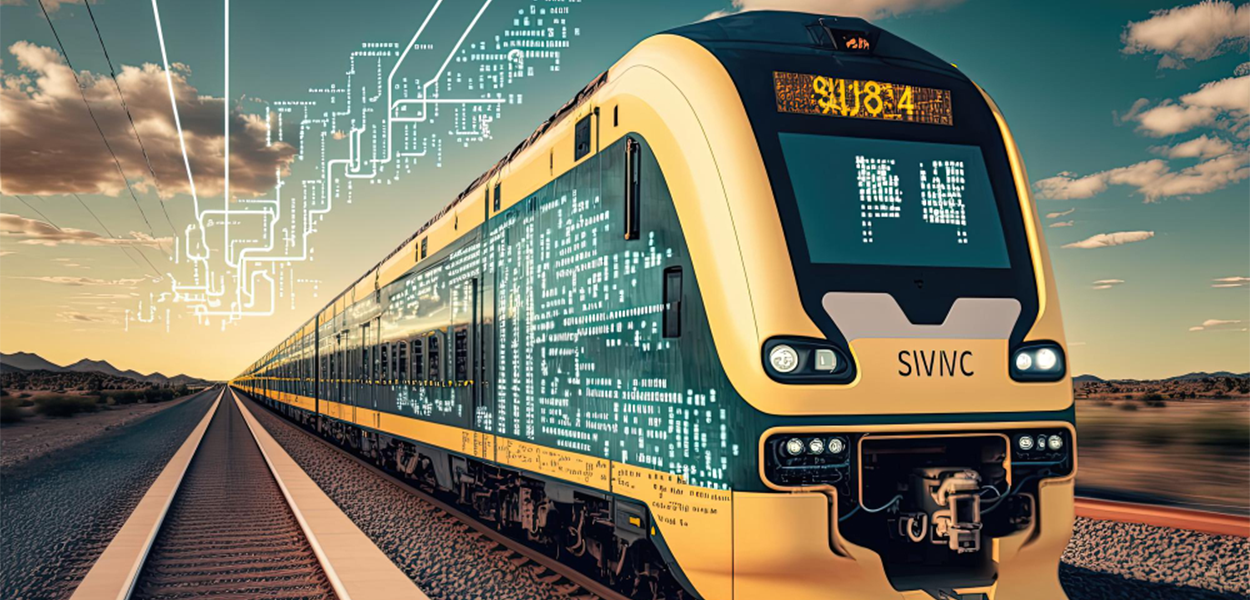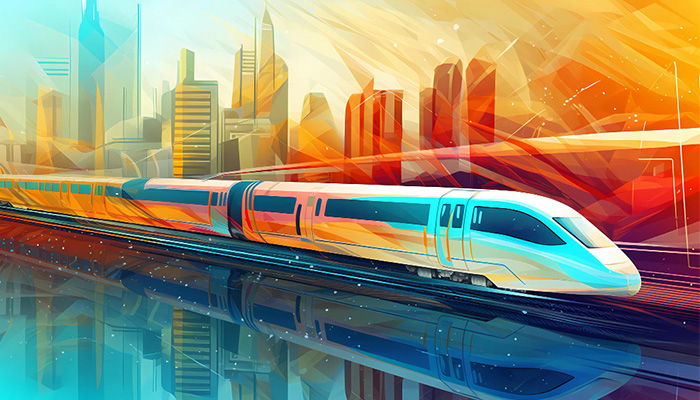Five Smart Ways IoT is Transforming the Railways
Five Smart Ways IoT is Transforming the Railways
Aug 9, 2023 14:40PM
Five Smart Ways IoT is Transforming the Railways
Aug 9, 2023 14:40PM

The British railways are about to undergo major changes. The industry must be aware of these new standards to provide better, more efficient, and customer-focused service. The DfT will reward train operating companies for meeting performance targets that measure the customer experience. IoT and "big data" technologies, underpinned by a cloud-based software automation platform such as mpro5, provide a smart solution for implementing, managing, and complying with the DfT's Service Quality Regimes.
Overcrowding is a safety issue, especially when people rush to get on trains or leave the station in an emergency. This is particularly true as COVID-19 and social distance are still on everyone's minds.
Sensors and video analytics can be used to monitor passenger density in train stations. This makes it easier to react to crowding. Video analytics on connected cameras can detect overcrowding in real time and alert staff at train stations to either move passengers or open additional gates or exits depending on footfall.
Over time, data collection becomes more accurate and useful. In the long run, data can be used to identify patterns and improve station layouts.
Lighting is crucial to passenger comfort and safety. Correct lighting levels enable customers to travel confidently through a train station while minimising the risk of an accident or incident.
Light sensors (also known as lux sensors) are widely used for measuring the brightness of light, both for safety and for the general atmosphere of the station.
In unmanned stations, automatic responses to faults are invaluable. They can make a big difference for passengers who otherwise would not use the station or risk being put in danger. Sensors can be used to trigger the reactive maintenance team in the event of a lighting problem.
IoT devices can measure and monitor thermal comfort (temperature and moisture) in real time. Sensors can monitor the temperature and take action when thresholds have been exceeded.
Maintenance may respond to a temperature drop below an acceptable threshold by fixing a faulty heater or increasing the output of nearby heating units.
The relationship between ambient conditions and dwell time is strong. The temperature of a station can make a difference in whether a passenger uses it as a hub for transport, spends money at the retail and food outlets, or just passes through.
The health of passengers has become a major concern. In any station, it is vital to monitor air quality, especially for passengers who suffer from respiratory diseases or other health problems. Trains moving can produce dust that contains potentially harmful particles, like PM2.5. This needs to be managed.
Train operators can measure the concentration of PM2.5 and receive alerts when air quality becomes poor or hazardous. To prevent serious reactions, those with health conditions at risk are advised to avoid travel when dust particles are above a moderate threshold. A medium-term trend analysis could even change the frequency of track-cleaning programmes in order to reduce dust accumulation.
The use of smart cleaning is not the most glamorous, but data from surveys shows that passengers are concerned about the cleanliness of washrooms. Smart cleaning uses the IoT's power to dispatch cleaners more reactively and efficiently. Cleaning operations can be coordinated with the rate of washroom use by using doorway counters. Cleaners can also act more efficiently and effectively when usage is known to be increasing. In contrast, if washrooms are quiet and the cleaning staff is not 'chained' to their stations, they can focus on other areas that have a direct impact on passengers, such as touch points and brightwork.
Cleaning can be done on demand using IOT in Railways. The future of cleaning in stations is here, with teams staying ahead of the curve and ensuring that the passenger experience remains the best possible.

When it comes to managing trains, safety is a key element in IoT solutions and applications. On-board detection and location systems allow trains to "be aware" of their surroundings. It reduces the likelihood of collisions and allows trains to run safely close to each other.
Another important safety application is speed monitoring and control. There are systems that display train speeds for drivers and send speeds to central control. According to Eurotech, on-board monitoring systems can be interconnected with outdoor signals that regulate train speed or remotely command trains to slow down based on track condition, switch positions, other trains present on the track, and other factors.
Signalling systems are used to control the movement and speed of trains by adjusting them remotely. According to Malesci, traditional train signalling systems use radio-frequency identification to identify the track. However, wireless train-to-ground signalling has become more common, both in railroads and metro systems. Malesci said that most new European high-speed railroads are equipped with European Train Control System Level 2, which is an advanced signalling system that requires constant radio communications between the train group and the train.
Red and green lights are used to avoid conflicting movements at intersections and crossings. Interlocking works with the signalling system in order to stop a train from getting a signal to continue if it is determined that the route is unsafe. IoT technology can improve the level of automation of the system and its integration into the signalling system.
The third system that impacts railroad safety is level crossing control. According to statistics from the European Railway Agency (ERA), 619 accidents took place at level crossings during 2010, resulting in 359 deaths in the European Union. In 2009, 831 accidents involving level crossings caused 405 deaths. Accidents at level crossings account for 30% of all rail fatalities in the EU. IoT could help reduce these statistics by using cameras and sensors to increase safety.
Malesci outlines a variety of uses beyond safety where the internet of things can be used to improve the efficiency of the railways.
Automating toilets will reduce costs for train operators and improve service to passengers, who are less likely to find toilets out of order. Most train operators cannot determine the state of the toilets on board in real-time, and manual checks are required.
Management of video recordings aboard. Rail operators are often forced to send staff onboard to manually retrieve the hard drive if a law enforcement agency requests video recordings for an investigation.
If data on the sold items is available in real-time, it will be easy to refill food and beverages at the next station.
Remote temperature control is possible to prevent issues with refrigerators, which may not work at all but whose temperature over time is crucial to maintaining food quality.
Predictive and preemptive maintenance can increase the number of trains in service rather than allowing them to sit in a repair or maintenance shop. It will also improve passenger safety and experience.
The Internet of Things (IoT) and data in general are important considerations for the rail sector as it works to improve customer experience and safety. The Williams-Shapps Plan for Rail Reforms is focused on data, simplicity, and customer experience. IoT App Development Services are real-time, and long-term trend analysis is therefore critical for their delivery.
Strategy
Design
Blockchain Solution
Development
Launching
Testing
Maintenance
Contact US!

Plot 378-379, Udyog Vihar Phase 4 Rd, near nokia building, Electronic City, Phase IV, Sector 19, Gurugram, Haryana 122015
Copyright © 2025 PerfectionGeeks Technologies | All Rights Reserved | Policy
Contact US!

Plot 378-379, Udyog Vihar Phase 4 Rd, near nokia building, Electronic City, Phase IV, Sector 19, Gurugram, Haryana 122015
Copyright © 2025 PerfectionGeeks Technologies | All Rights Reserved | Policy